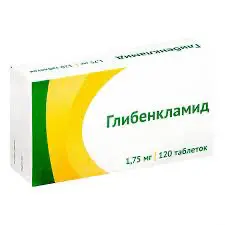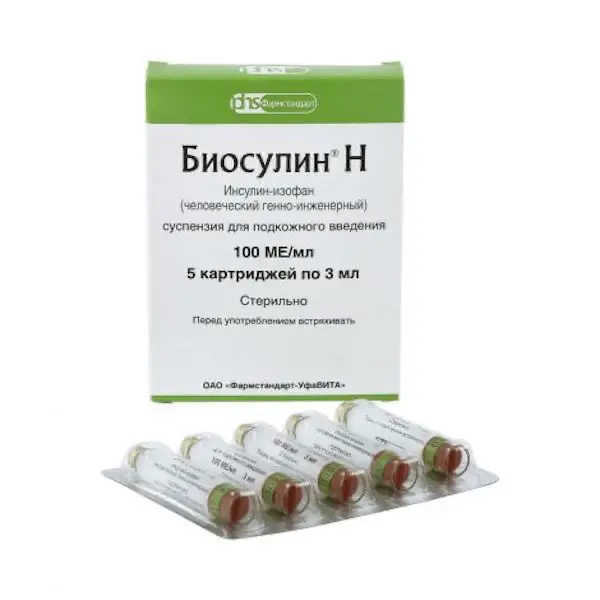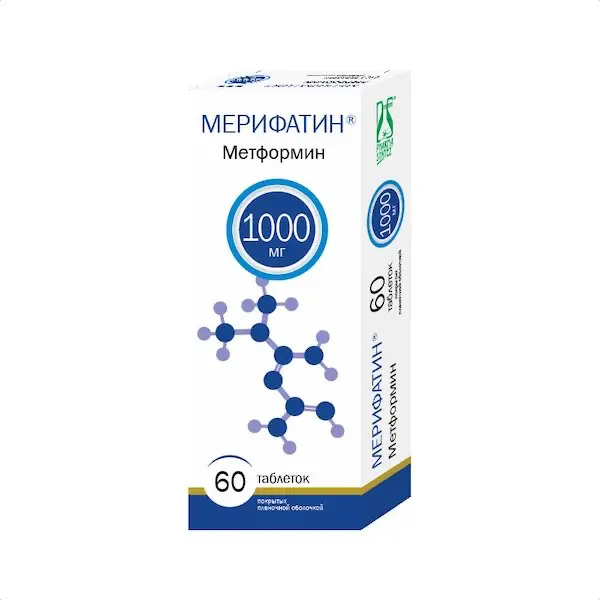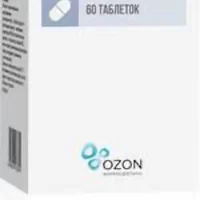Description
Diabeton Pharmacodynamics
Gliclazide is a sulfonylurea derivative, hypoglycemic drug for oral administration, which differs from similar drugs by the presence of N-containing heterocyclic ring with endocyclic bond.
Gliclazide reduces blood glucose concentration by stimulating insulin secretion by C-cells of Langerhans islets. Increased concentration of postprandial insulin and C-peptide persists after 2 years of therapy.
In addition to its effect on carbohydrate metabolism, gliclazide has hemovascular effects.
Effects on insulin secretion
In type 2 diabetes, the drug restores the early peak of insulin secretion in response to glucose intake and enhances the second phase of insulin secretion. A significant increase in insulin secretion is observed in response to stimulation caused by food intake or glucose administration.
Hemovascular effects
Gliclazide decreases the risk of small vessel thrombosis by acting on the mechanisms which may contribute to the development of complications in type 2 diabetes: partial inhibition of platelet aggregation and adhesion and reduction of platelet-activating factors (beta-thromboglobulin, thromboxane B2), restoration of fibrinolytic activity of vascular endothelium and increase of tissue plasminogen activator activity.
Intensive glycemic control based on the use of the drug Diabeton® MV (concentration of glycosylated hemoglobin
(HbA1c) < 6.5%), significantly reduces micro- and macrovascular complications of type 2 diabetes compared to standard glycemic control (ADVANCE study).
The intensive glycemic control strategy involved prescribing Diabeton MB and increasing its dose with (or instead of) standard therapy before adding another hypoglycemic drug (e.g., metformin, an alpha-glucosidase inhibitor, a thiazolidinedione derivative, or insulin). The average daily dose of Diabeton CF in patients in the intensive control group was 103 mg, the maximum daily dose was 120 mg.
Against the background of using the drug Diabeton MV in the intensive glycemic control group (mean duration of follow-up 4.8 years, mean HbA1c concentration 6.5%) compared to the standard control group (mean HbA1c concentration 7.3%) showed a significant reduction by 10% of the relative risk of the combined incidence of macro- and microvascular complications.
The benefit was achieved by significantly reducing the relative risk of: major microvascular complications by 14 %, the occurrence and progression of nephropathy by 21 %, the occurrence of microalbuminuria by 9 %, macroalbuminuria by 30 % and the development of renal complications by 11 %.
The benefits of intensive glycemic control against the background of taking the drug Diabeton MV were independent of the benefits achieved against a background of hypotensive therapy.
Indications
– Type 2 diabetes mellitus with ineffectiveness of diet therapy, physical activity and weight reduction.
– Prevention of complications of type 2 diabetes mellitus: reduction of risk of microvascular (nephropathy, retinopathy) and macrovascular (myocardial infarction, stroke) complications in patients with type 2 diabetes by means of intensive glycemic control
Contraindications
– Hypersensitivity to gliclazide, excipients included in the drug, other sulfonylurea derivatives, sulfonamides;
– diabetes mellitus type 1;
– diabetic ketoacidosis, diabetic precoma, diabetic coma;
– severe renal or severe hepatic insufficiency (insulin is recommended in these cases);
– use of miconazole (see section “Interaction with other medicinal agents”);
– pregnancy and breastfeeding (see section “Administration during pregnancy and breastfeeding”);
– under 18 years of age.
Due to the fact that the drug contains lactose, Diabeton® MV is not recommended for patients with congenital lactose intolerance, lactase deficiency, glucose-galactose malabsorption.
Dosage and administration
- Gliklazid is intended for the treatment of adults only.
- The recommended dose of gliclazide should be taken orally, once daily, preferably during breakfast.
- The daily dose may be 30-120 mg (1/2-2 tablets) in one sitting.
- It is recommended to swallow the tablet or half of it in whole without chewing or crushing.
- If one or more doses of the drug are missed, the higher dose should not be taken at the next appointment, the missed dose should be taken the next day.
- As with other hypoglycemic drugs, the dose of gliclazide in each case should be adjusted individually, depending on the blood glucose concentration and HbA1c.
- Initial dose
The initial recommended dose (including for elderly patients aged 65 years) is 30 mg per day (1/2 tablet). - If adequately controlled, gliclazide at this dose may be used for maintenance therapy. If glycemic control is inadequate, the daily dose of gliclazide may be sequentially increased to 60, 90 or 120 mg.
- The dose can be increased not earlier than after 1 month of therapy with gliclazide in the previously prescribed dose. Patients in whom blood glucose concentrations have not decreased after 2 weeks of therapy are an exception. In such cases, the dose of gliclazide may be increased after 2 weeks of therapy.
- The maximum recommended daily dose of gliclazide is 120 mg.





